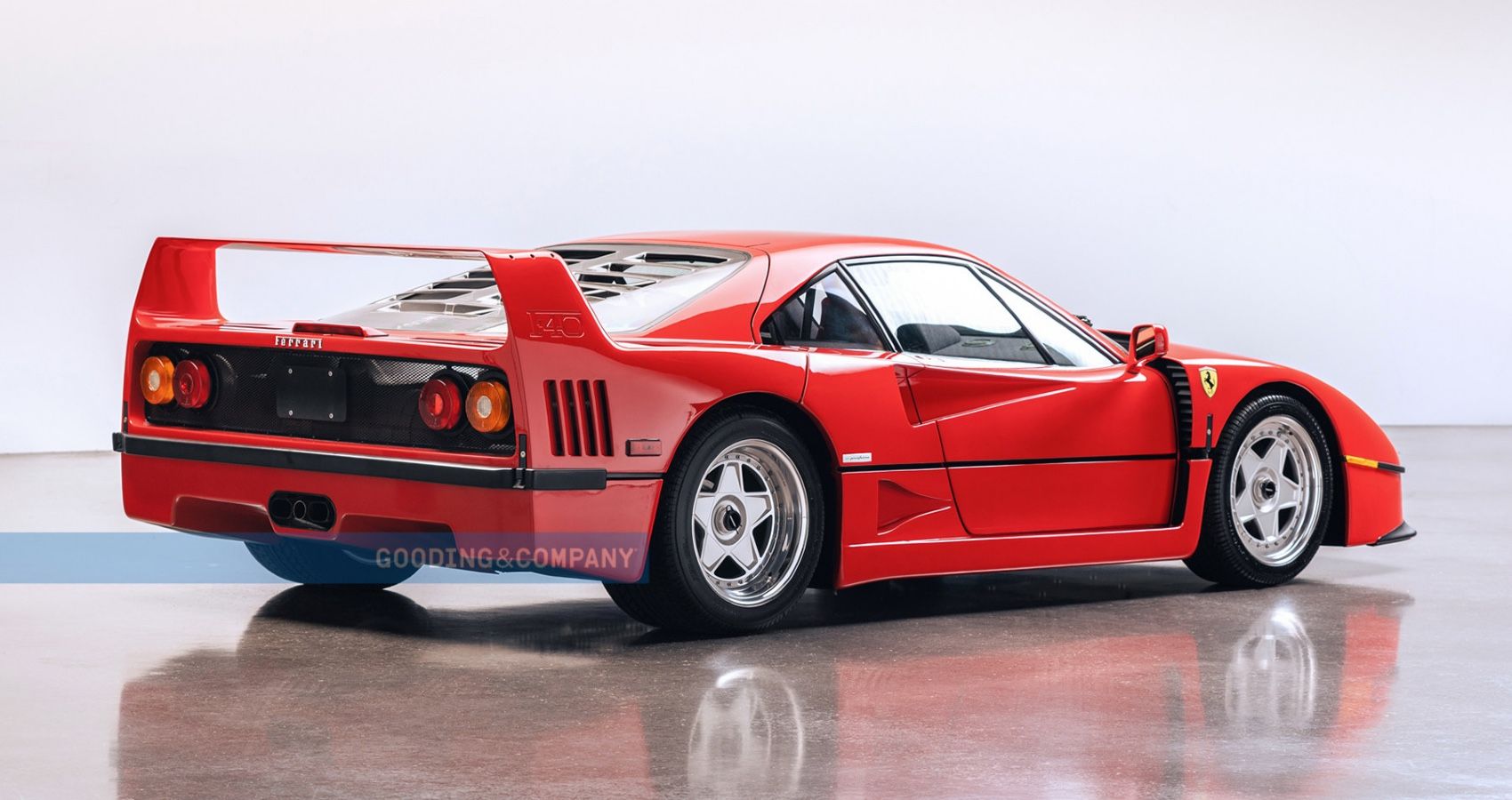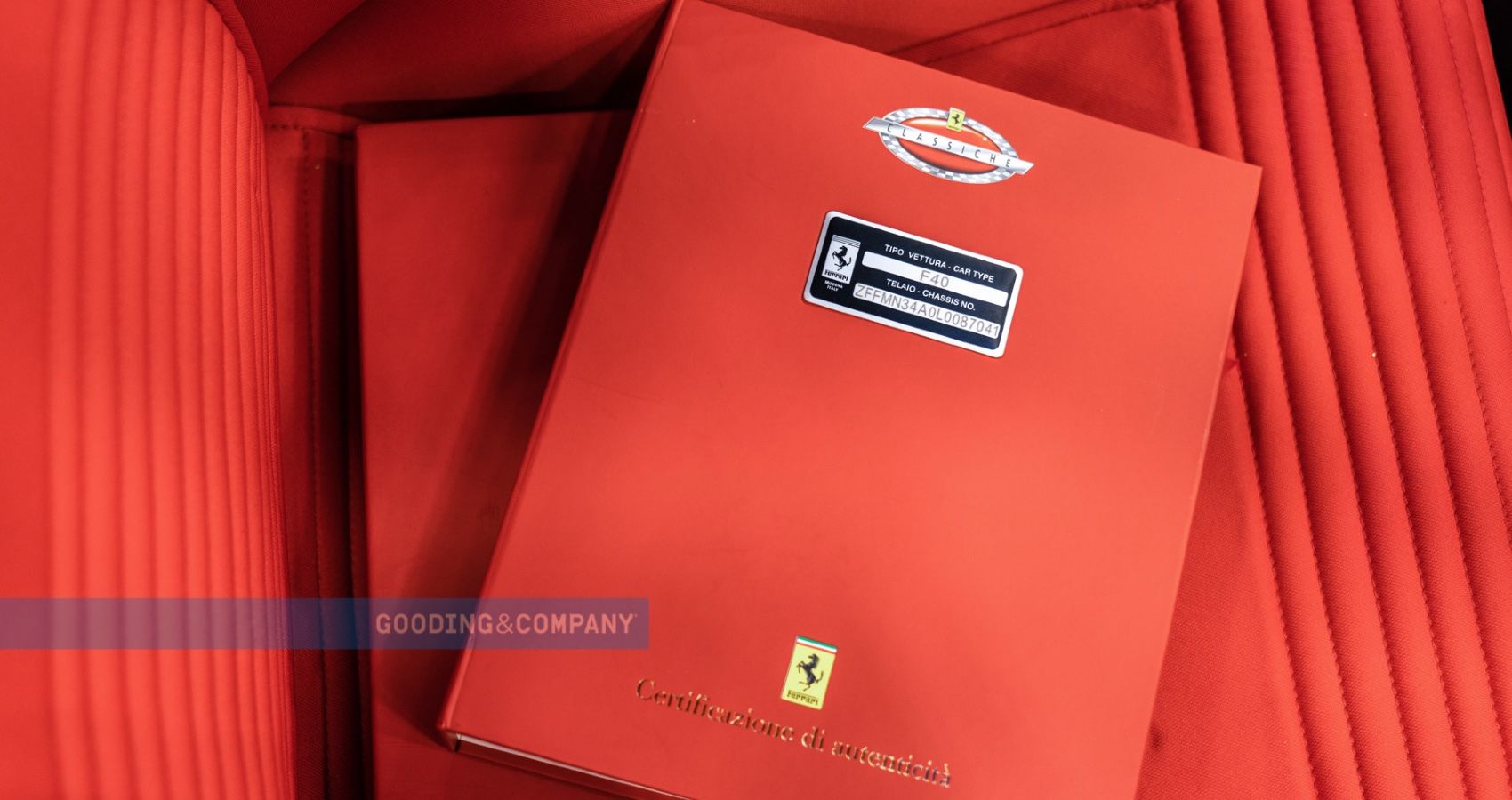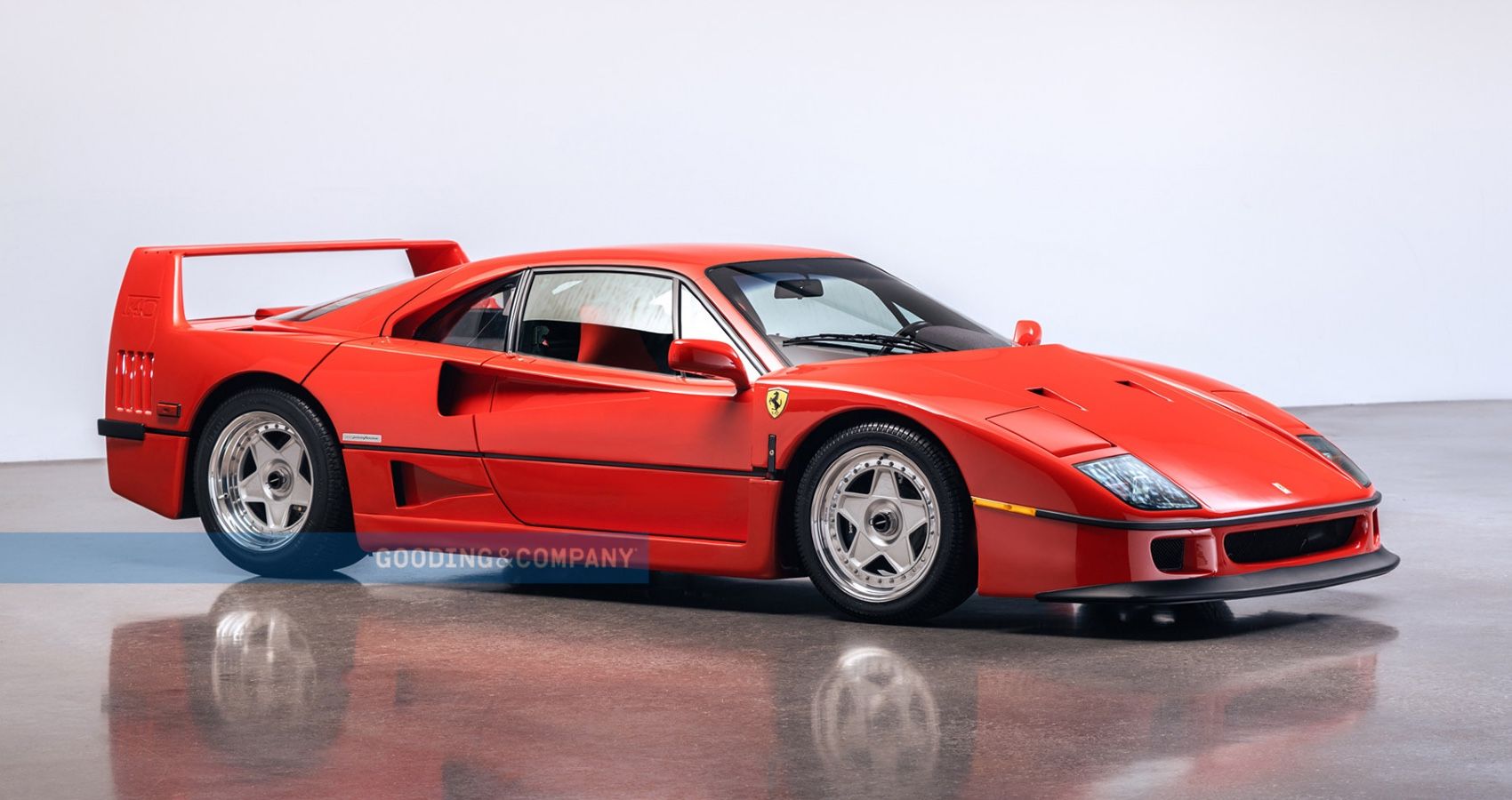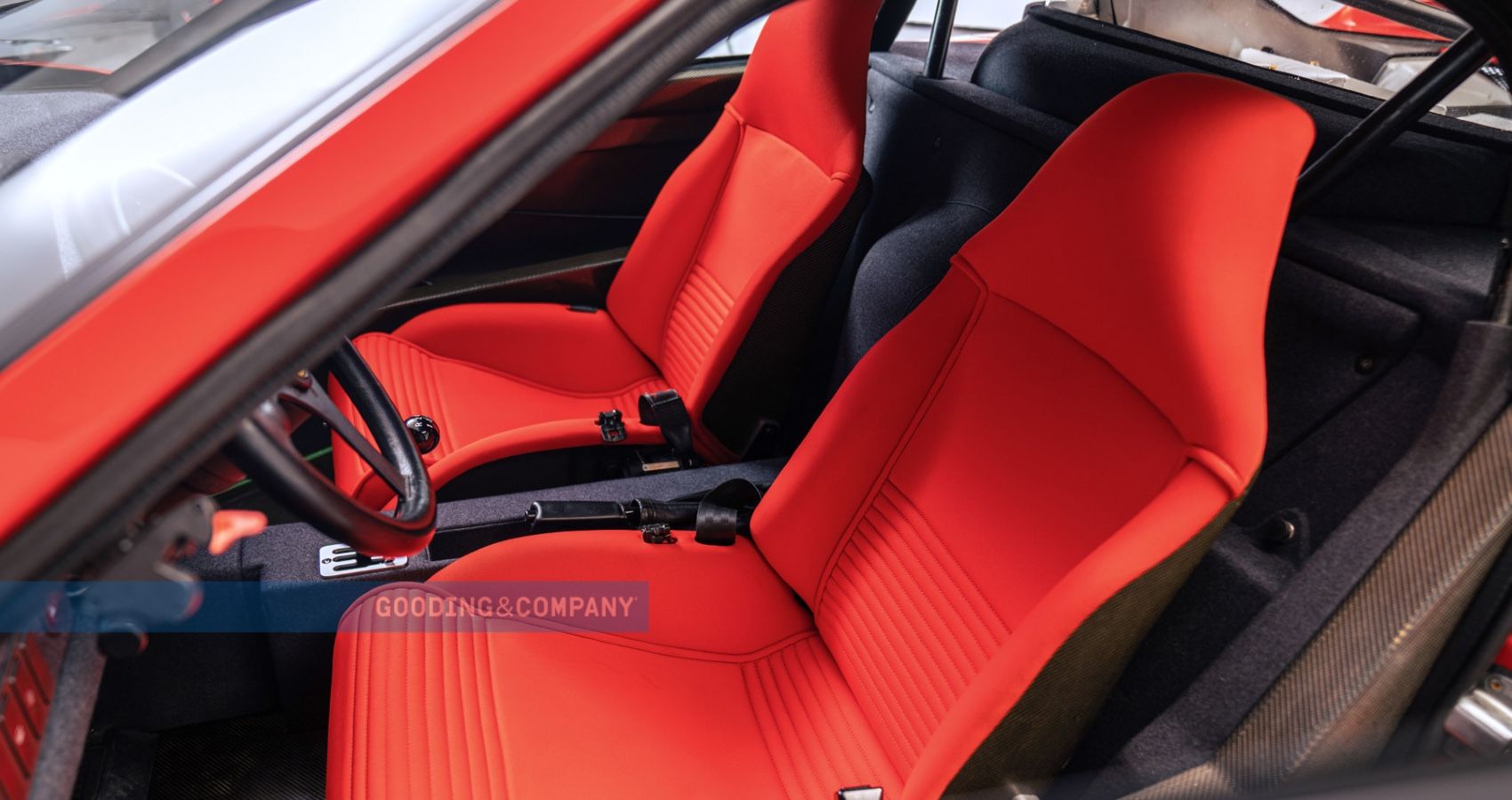We all know what Ferrari represents and how covetable its models are. Perhaps one of the most revered in its lineup is the Ferrari F40. The F40 was the brainchild of Nicola Materazzi, Ferrari’s head of development, who pitched it as a competitor to the highly advanced Porsche 959.
The successor to the 288 GTO came as the last Ferrari ever to be personally signed off by Enzo Ferrari. The F40 was made from 1987 to 1992 to commemorate 40 years of the prestigious marque. At the time, it was the most expensive supercar sold by Ferrari.
The F40 wasn’t an easy commission and was developed within 13 months to be the most extreme and lightweight supercar ever to leave Maranello. With race-bred DNA, the Ferrari F40 shares a spot amongst the legends of the automotive industry.
1990 Ferrari F40 Up For Grabs At 2022 Pebble Beach Auction
Given the brand’s rich racing heritage and being the last Ferrari to be signed off by the legend himself, the F40 is, without doubt, a supercar with great provenance. When new, the F40 was worth around $400,000, and today, decent examples go for five to six times that, some even costing more. Gooding & Company’s listing is expected to carry a price tag between $2.75 million and $3.25 million. However, the bid price and other lot details will follow closer to the auction date. Check out Gooding & Company’s website for updates.
This F40 has clocked just 1,800 miles and is certified by Ferrari Classiche (pictured above). Maintained in pristine condition, the F40 received several accolades when displayed at the 2021 Ferrari Club of America Annual Experience. It was awarded the Coppa GT, Coppa Bella Macchina, Outstanding Supercar, and 100-Point Platinum Award. Out of all Ferrari halo cars, the F40 was the most produced—1,315 units worldwide—of which 213 units found their way to the United States, and the F40 in question is number 77.
Ferrari F40: The Story of Its Existence
It all began with Group B racing. The Ferrari 288 GTO was a perfect starting place, and the team developed a competition version dubbed the 288 GTO Evoluzione. This project was proposed to enter FIA Group B in the same class as its competitor, the Porsche 959. However, in 1986 FIA banned Group B, and Ferrari was left 5 of the 288 GTO Evoluzione development cars in hopes of finding an enthusiastic buyer. One of the validation drivers convinced Enzo that it was possible to keep the idea alive and make it roadworthy. Enzo, possibly acknowledging him entering the last days of his life, gave the project a green signal.
The Ferrari F40 was to be released in 1987, and the engineering division had 13 months to completely homologate the supercar for various legislations. The development took place in total secrecy, and not many apart from the ones close to Enzo were aware of such a project happening. Commemorating the iconic brand’s 40th anniversary, the F40 came at a time when customers said Ferraris were becoming too plush and comfortable.
What Makes The Ferrari F40 So Unique?
The F40 stuck to the classic principle of less weight and more power, unlike the Porsche 959, which was a technological feast. The F40 employed turbocharging and was the third road-going Ferrari ever to have forced induction. Power came from a 2.9-liter twin-turbo V8 producing 471 horsepower and 426 lb-ft of torque. The engine was closely related to the 288 GTO, albeit with several tweaks for enhanced output. Transmission was a 5-speed dogleg manual designed to handle the immense torque generated from the turbocharged motor.
The weight was significantly cut down to 1,200 kilograms (less than 3000-pounds). The F40 saw the extensive use of carbon fiber and kevlar across its body shaving away a significant chunk of mass. The chassis was a steel tubular frame that offered immense rigidity while being lightweight. In line with its weight savings, the F40 is aerodynamically very efficient. NACA ducts are employed on the hood, rear fenders, side skirts, and even on the doors. Along with these, there are vents on the front and rear fenders that release turbulent air, thereby relieving pressure inside the wheel wells. The Interior is largely stripped out with minimal moving parts.
For instance, leather was not an option, and the dash is lined with felt to reduce glare and of course, weight. There are no seat adjustments or any power-operated systems; steering, brakes, and windows are all unassisted. There’s bare carbon fiber everywhere, and everything you see is there for a purpose—to shed weight. For the time, the F40 was one of the first supercars to employ a fully-carbon-fiber bodyshell. The power to weight ratio was unlike any Ferrari before, resulting in a 0-60 time of 4.2 seconds and a top speed of 199 mph.
Sources: Good & Company, Ferrari




